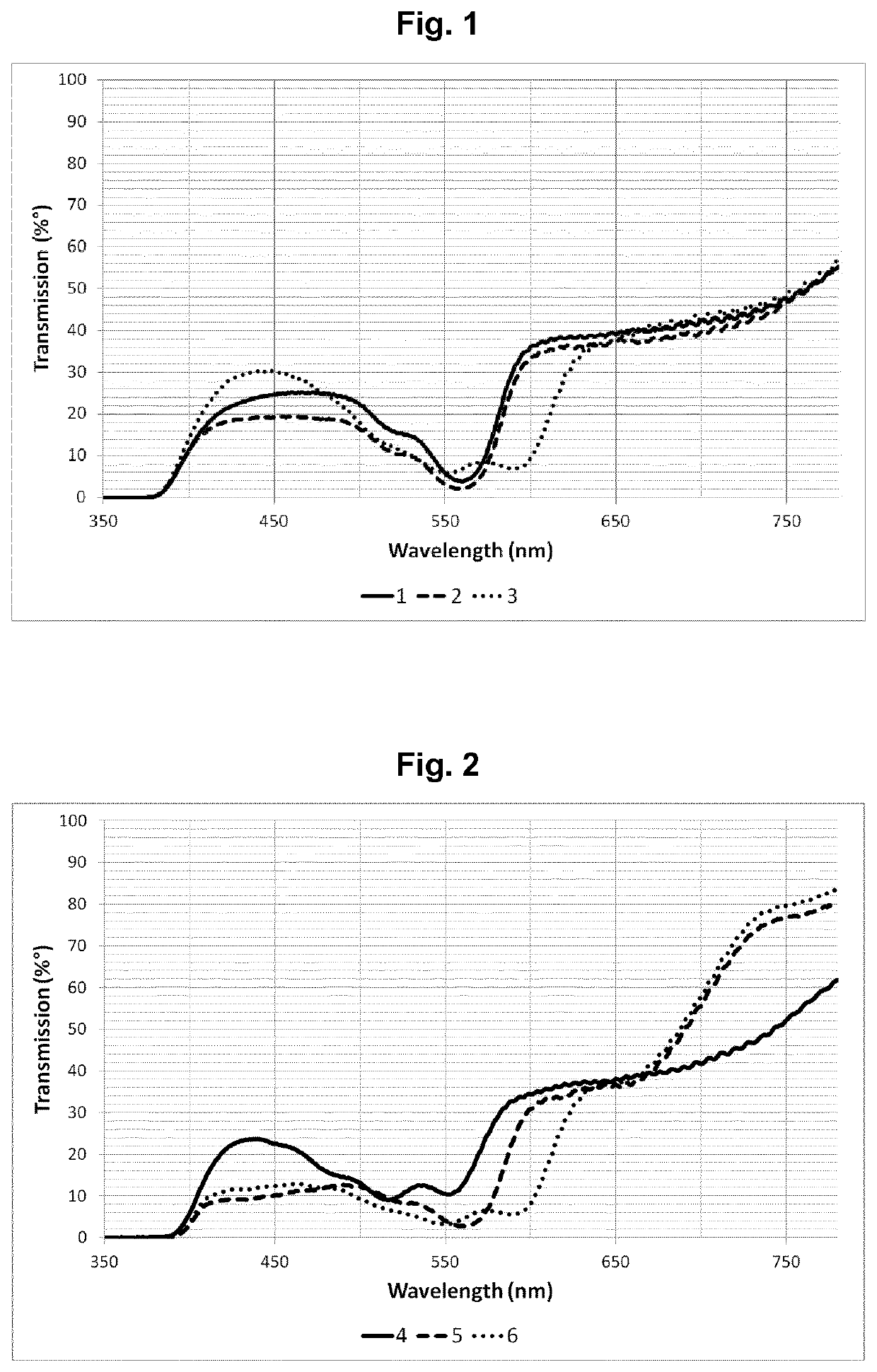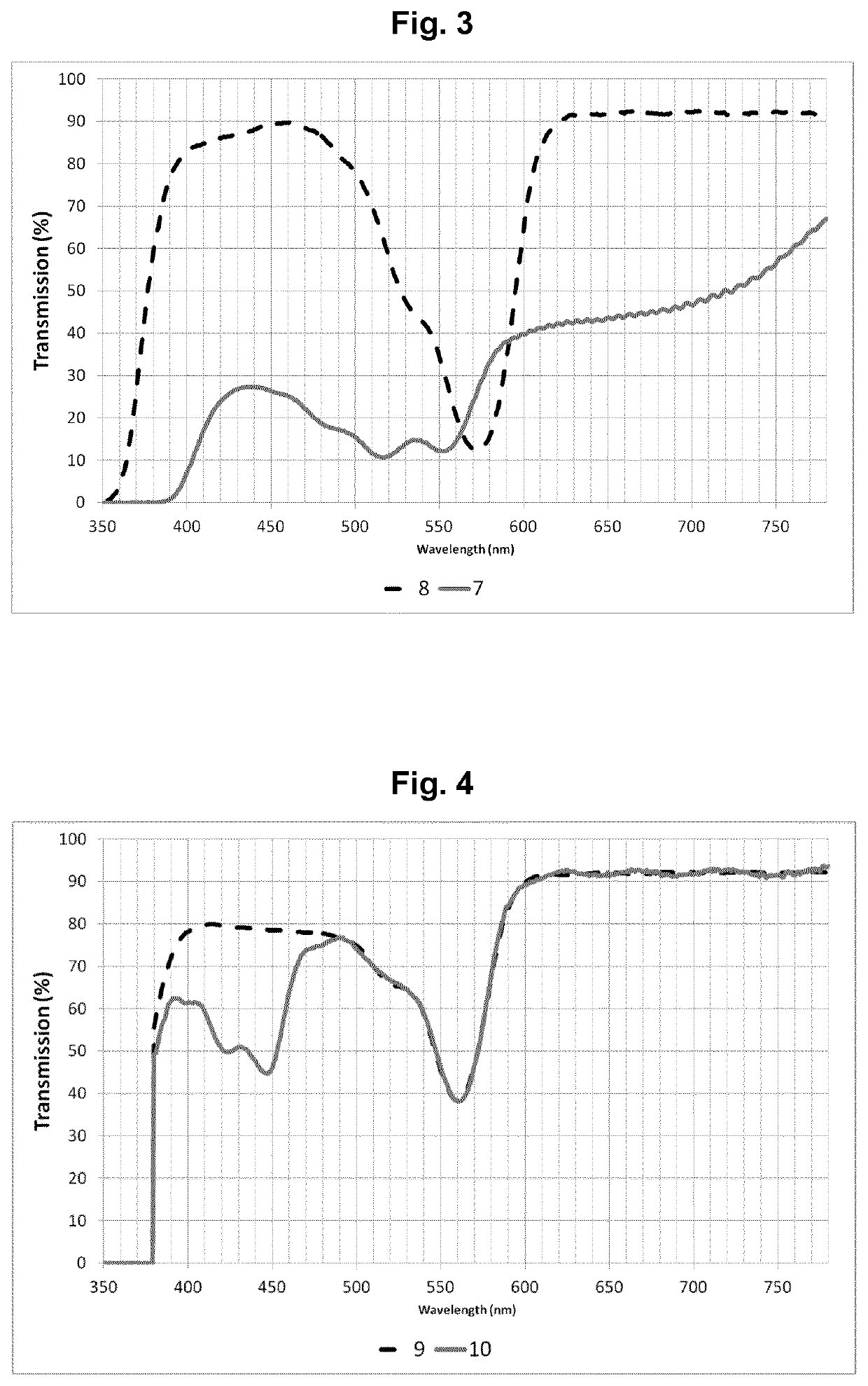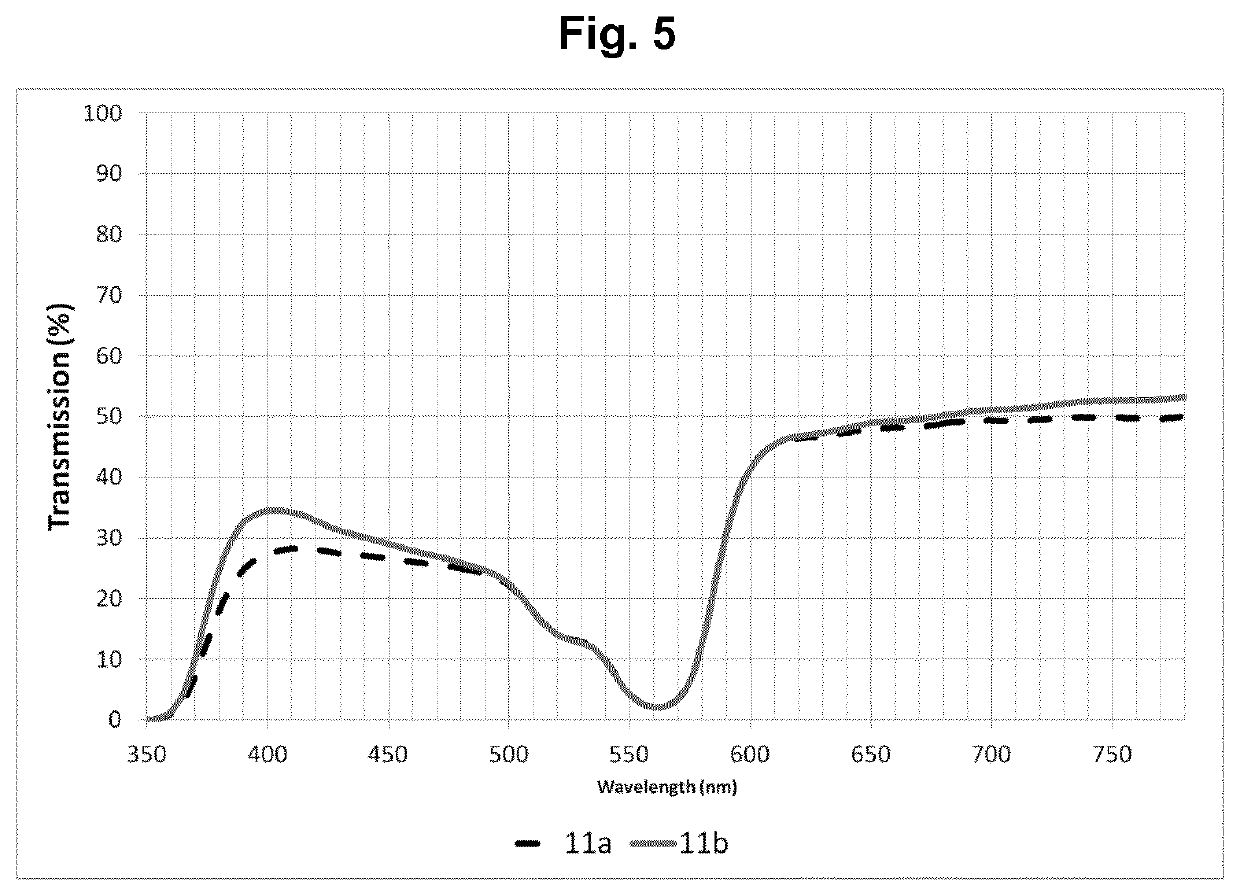Optical lens for correcting color vision
a color vision and optical lens technology, applied in the field of optics, can solve the problems of cosmetically unacceptable presence of the reflective surface of the lens, increased viewer problems in object discrimination, and color lens has a pinky unsightly aspect which is not easy to wear,
- Summary
- Abstract
- Description
- Claims
- Application Information
AI Technical Summary
Benefits of technology
Problems solved by technology
Method used
Image
Examples
examples
[0275]1—Tested Lenses
[0276]
TABLE 1LensColoring dyeSubstrateMasking means1Orasol 363Polar Grey (S1)Polar2Orasol 363Polar Grey (S1)Polar and front side mirror3Heliotrop Lumacel RPolar Grey (S1)Polar4NFRPolar Grey (S1)Polar and front side mirror5Orasol 363Polar Brown (S2)Polar6Heliotrop Lumacel RPolar Brown (S2)Polar7NFRPolar Grey (S1)Polar8Sulforhodamine BWhite lens (S3)None9Orasol 363White lens (S3)None10Orasol 363White lens (S3)Colour balancing (YellowHLR)11Orasol 363White Lens (S3)Asymmetric interferentialstack
[0277]Orasol 363 dye is supplied by BASF. Heliotrop Lumacel R is supplied by M. Dohmen. NFR is a red dye supplied by Huntsman. Yellow HLR is supplied by Sumika. Sulforhodamine B is obtained from Merck, and further purified.
[0278]2—Method of Preparation
[0279]Lenses from 1 to 7 use as making means a Polar film (see section 2.1 and 2.2 for details), and eventually a mirror on front side (Lenses 2 and 4). Lenses from 8 to 9 do not use masking means (see section 2.3 for details). ...
PUM
| Property | Measurement | Unit |
|---|---|---|
| wavelength | aaaaa | aaaaa |
| wavelength | aaaaa | aaaaa |
| wavelength | aaaaa | aaaaa |
Abstract
Description
Claims
Application Information
 Login to View More
Login to View More - R&D
- Intellectual Property
- Life Sciences
- Materials
- Tech Scout
- Unparalleled Data Quality
- Higher Quality Content
- 60% Fewer Hallucinations
Browse by: Latest US Patents, China's latest patents, Technical Efficacy Thesaurus, Application Domain, Technology Topic, Popular Technical Reports.
© 2025 PatSnap. All rights reserved.Legal|Privacy policy|Modern Slavery Act Transparency Statement|Sitemap|About US| Contact US: help@patsnap.com



